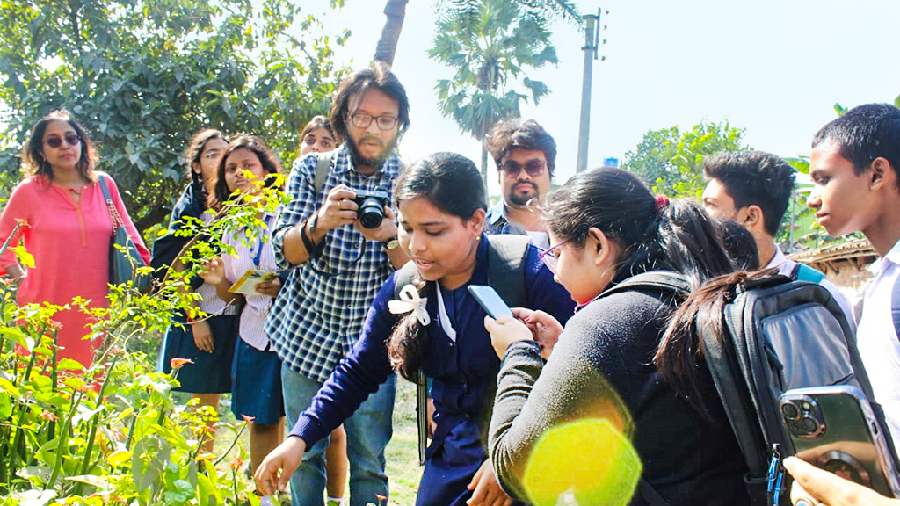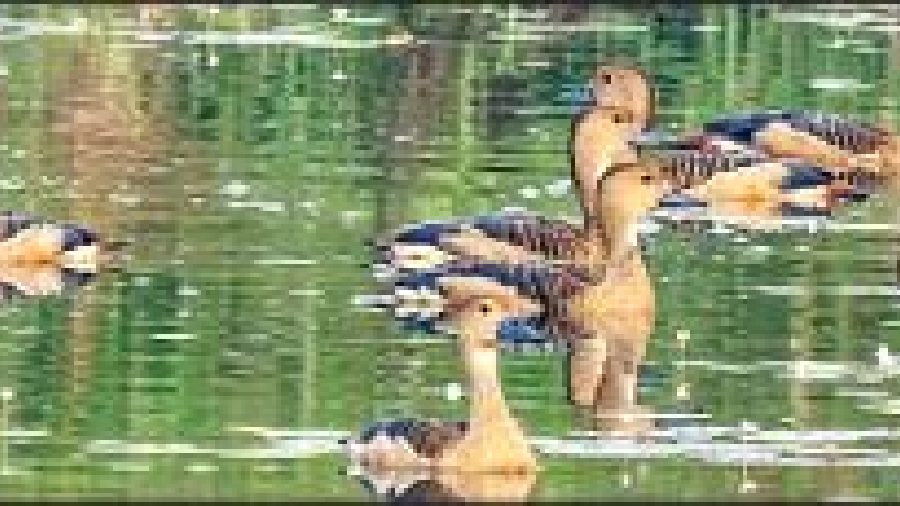■ Sap is extracted from date palm trees at the East Kolkata Wetlands and sold in the city and outside.
■ Wastewater from the city that flows into the East Kolkata Wetlands is treated naturally and the water is then used for cultivation of fish.
■ Improper dumping of solid waste is damaging the wetlands.
Students who live on the periphery of the East Kolkata Wetlands explained to pupils from private schools during a tour of the watery sprawl recently the nature of biodiversity of the place and what needs to be done for its conservation.
Students from two schools from within the wetland community — Kheadaha High School and Bamanghata High School — went around with students from Modern High School for Girls, Calcutta International School, Future Hope School and Ek Tara.
Gargee Shaw, 13, from Kheadaha High School, was one of the guides explaining to the students from the private schools how the wetlands nurture life.
“The students who came were listening to us and some of them had questions. They asked us the names of trees,” said Gargee, a Class VIII student.
The parents of most of the students from Kheadaha High School and Bamanghata High School are engaged in part-time cultivation of fish in the wetlands. For the rest of the day, they work as drivers or labourers in other places to earn a living.
The tour was part of the Jolabhumi Utsav by Disappearing Dialogues Collective, which works in different communities and social groups through interdisciplinary art practices.
The festival included wetland trails, mural making, exhibition of artwork, performance and cataloguing the flaura and fauna of the wetlands.
The collective is currently working with the youths of the wetlands areas to archive the traditional knowledge and practices, and biodiversity to amplify the voices of local youth on the need to conserve the rich ecosystem.
“Many of these children living within the wetlands community would shy away from the fact that their fathers are fishermen, but we want them to have a sense of identity and feel proud of their roots being in the wetlands. They should take ownership of this vast natural heritage,” said Nobina Gupta, director, Disappearing Dialogues Collective.
Class XI student Shrivi Agarwal of Modern High School for Girls was amazed at the knowledge of the students about the wetlands.
“I live in Anandapur, but I never knew that we have such a natural resource almost within our city,” said the 16-year-old.
She was part of the scroll painting workshop. “We built a story on how the natural resources in the wetlands are depleting and how the people in the community are leaving the wetlands and moving to the city.”
The interaction promotes social integration among diverse groups of children, said teachers of private city schools.
“There have to be more such programmes to initiate interaction amongst students from different backgrounds and that would encourage social integration. The children should in turn come and speak to others in their class and school on what they have learnt from the interaction,” said Devi Kar, director of Modern High School for Girls.
Kar said that for students within the wetlands community, their self-confidence and love for the environment would go up when they see others admiring their surroundings.

